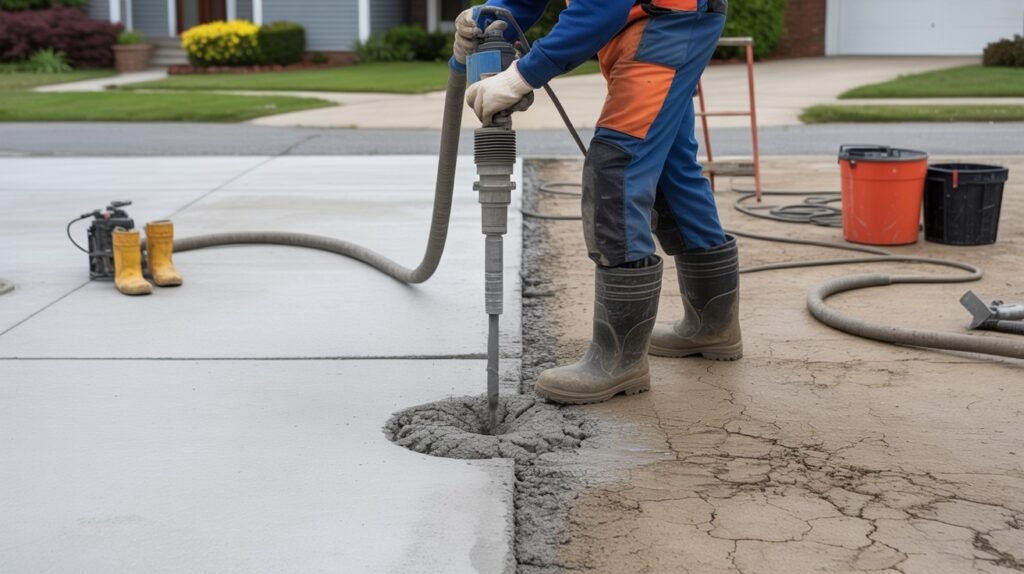Are You Tired of Tripping Over Sunken Concrete?
You know that annoying dip in your driveway that makes your car scrape every time?
Or maybe it’s that uneven sidewalk section that’s become a safety hazard for your family and guests.
These concrete settling issues are more common than you think, and they don’t have to break the bank to fix.
What is mudjacking? It’s a smart, affordable solution that can restore your sunken concrete slabs without the massive expense of complete replacement.
This proven technique has been saving homeowners thousands of dollars while solving their concrete problems in just a few hours.
Ready to learn how this game-changing process works and if it’s right for your situation? Let’s break down everything you need to know about this practical concrete repair method.
What Is Mudjacking?
Mudjacking is a concrete repair technique that lifts and levels sunken slabs back to their original position.
Also known as slabjacking or concrete lifting, this method involves pumping a specialized mixture beneath settled concrete to raise it up.
This process is commonly used to fix various concrete surfaces around your property, including sidewalks, driveways, patios, garage floors, and pool decks.
Instead of tearing out and replacing entire concrete sections, mudjacking offers a more affordable alternative that addresses the root cause of settling while restoring the surface to a proper level and functionality.
How Does Mudjacking Work?
Step 1: Assessment
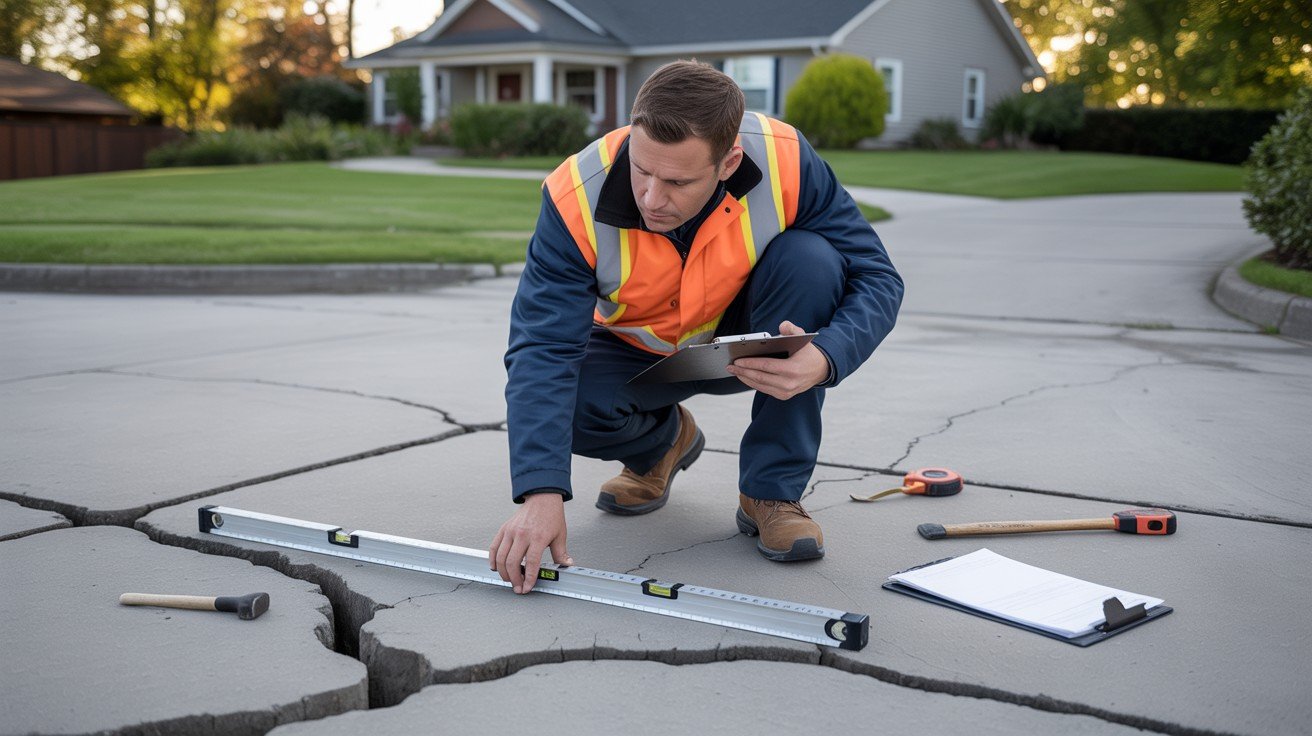
Certified technicians examine your sunken concrete to determine the extent of settling and identify underlying causes. They check for cracks, measure height differences, and assess soil conditions beneath the slab.
This evaluation helps determine if mudjacking is the right solution and allows professionals to plan the most effective approach for your specific situation.
Step 2: Drilling Holes
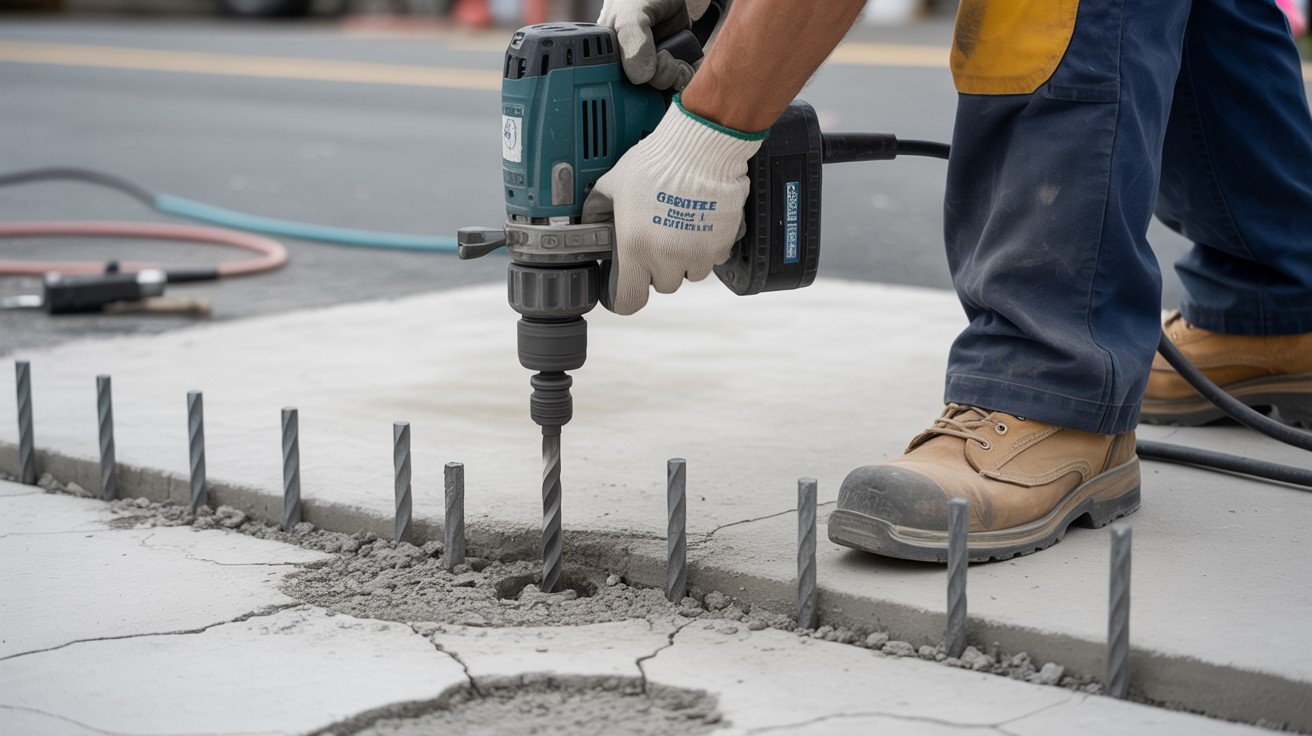
Small holes measuring 1-2 inches in diameter are strategically drilled through the concrete slab at specific intervals.
These access points are carefully positioned to ensure even distribution of the lifting material.
The holes are typically spaced 3-6 feet apart, depending on the slab size and settling pattern, creating pathways for the slurry injection.
Step 3: Pumping Slurry
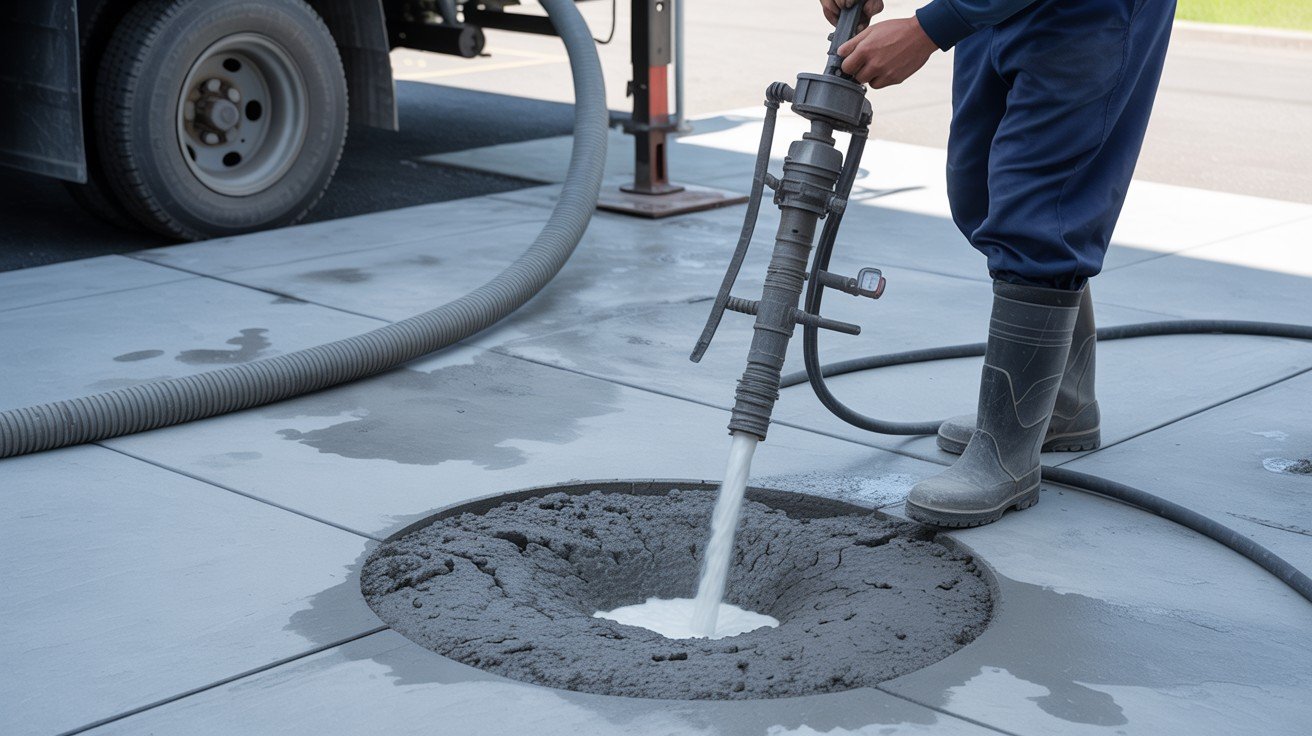
A specially formulated mixture of water, cement, soil, and sometimes sand is pumped through the drilled holes using high-pressure equipment.
This slurry flows beneath the concrete slab, filling voids and creating a stable foundation.
The mixture is designed to be fluid enough to spread evenly while maintaining strength once it sets.
Step 4: Lifting the Concrete
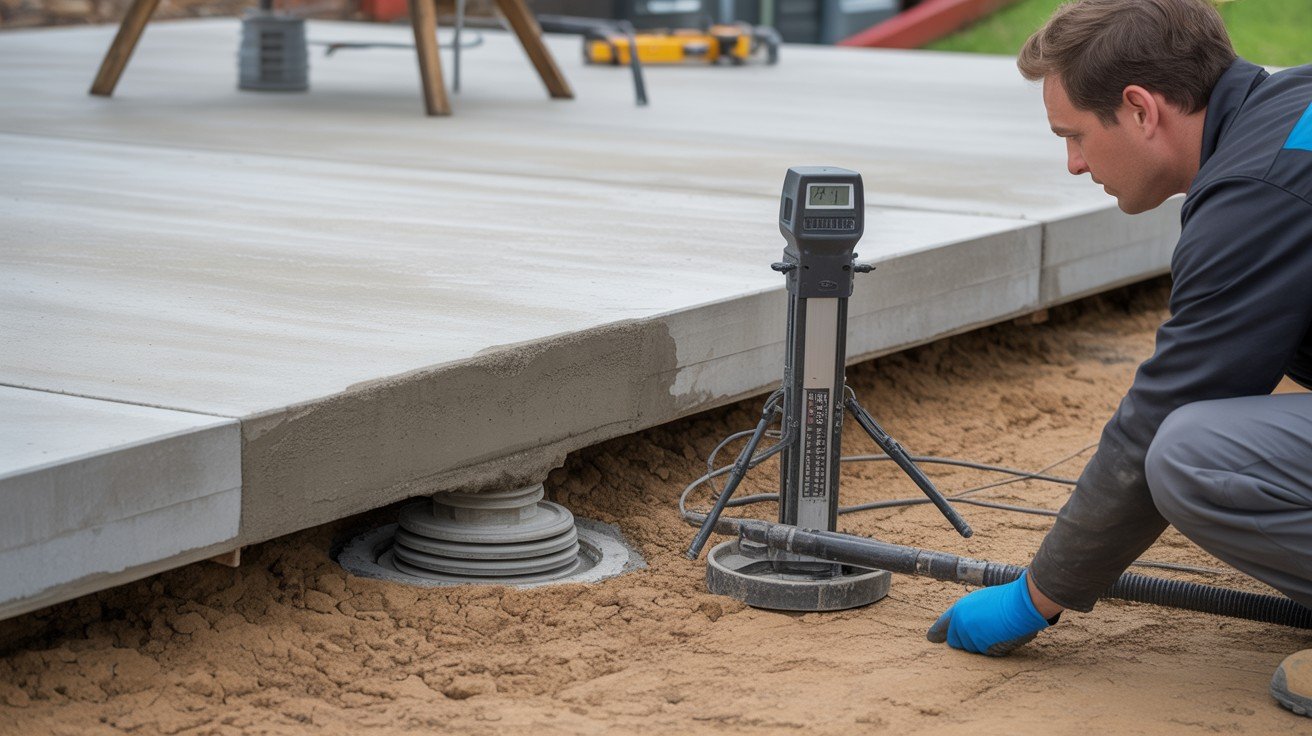
As the slurry continues to be pumped, hydraulic pressure builds beneath the slab, gradually lifting it back to its original level.
Technicians carefully monitor the lifting process to ensure even raising and prevent over-lifting. This controlled process typically takes 30-60 minutes per section, depending on the area size and settling severity.
Step 5: Patching Holes
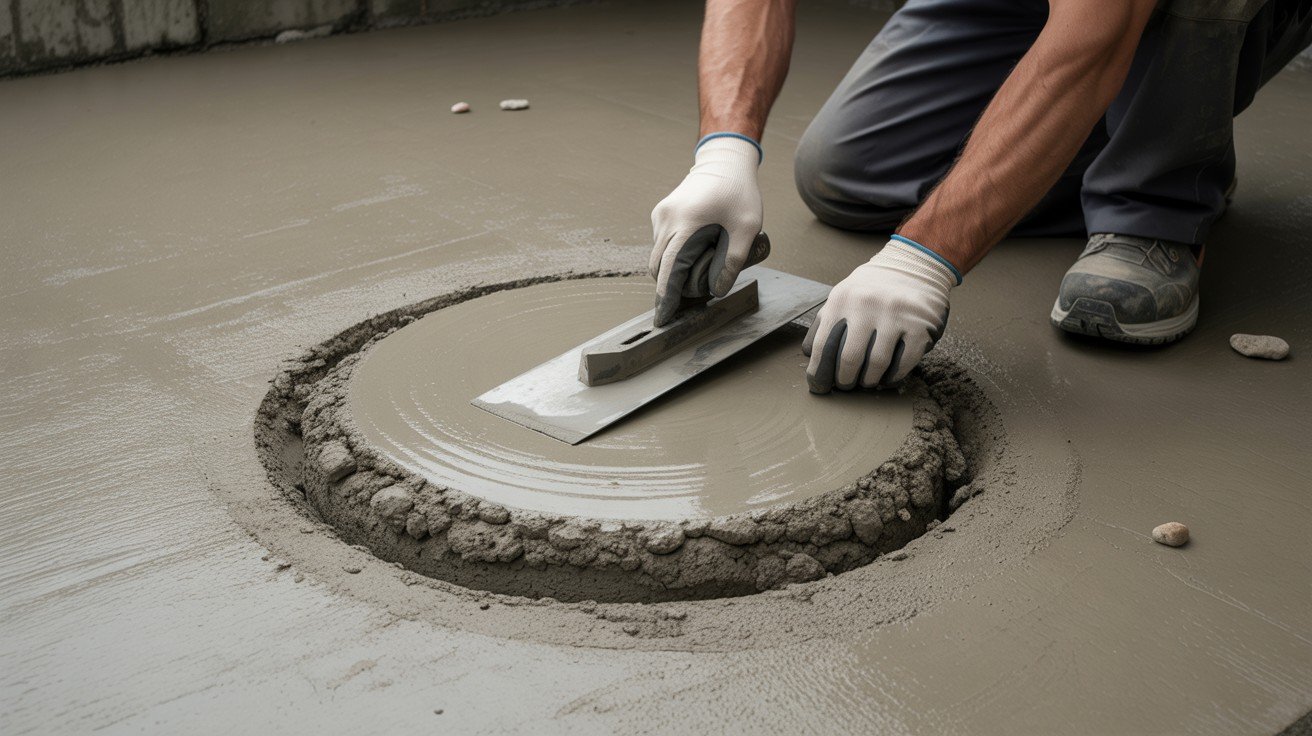
Once the concrete reaches the desired level, the injection holes are filled with concrete patch material and smoothed to match the surrounding surface.
The patches are allowed to cure, creating a seamless repair that blends with the existing concrete.
Most patches become virtually invisible once fully dried and can be walked on immediately.
What Materials Are Used in Mudjacking?
- Water – Acts as the carrier fluid that makes the mixture pumpable and helps activate the cement for proper curing
- Limestone – Provides bulk and stability to the mixture while offering excellent load-bearing properties for long-term support
- Sand – Adds density and helps fill voids effectively, creating a solid foundation beneath the concrete slab
- Cement – Serves as the binding agent that hardens the mixture and creates a permanent, stable base
- Eco-Friendly Benefits – All components are natural materials that won’t contaminate soil or groundwater systems
- Durability Factors – The mixture creates a strong, weather-resistant foundation that can last 8-15 years under normal conditions
- Non-Toxic Composition – Safe for residential use around children, pets, and landscaping without environmental concerns
How Much Does Mudjacking Cost?
Mudjacking costs vary based on several factors, but it remains significantly more affordable than concrete replacement.
The national average ranges from $500-$1,500 for most residential projects.
Cost Comparison Table
|
Repair Method |
Average Cost |
Time Required |
Savings |
|
Mudjacking |
$500-$1,500 |
2-4 hours |
50-70% less |
|
Slab Replacement |
$1,500-$4,000 |
3-7 days |
– |
Key Cost Factors
- Square footage and slab thickness
- Severity of settling issues
- Site accessibility for equipment
- Regional labor and material rates
The price difference makes mudjacking an attractive option for most homeowners dealing with concrete settling problems.
Pros and Cons of Mudjacking
Pros
- Cost-Effective Solution – Saves 50-70% compared to complete slab replacement, making it budget-friendly for most homeowners
- Quick Process – Most projects are completed within 2-4 hours, allowing immediate use of the repaired surface
- Minimal Disruption – No heavy machinery or excavation required, preserving your landscaping and reducing mess around your property
Cons
- Not Suitable for Damaged Concrete – Severely cracked or crumbling slabs may not hold the lifting pressure effectively
- Temporary Solution – If underlying soil erosion continues, the concrete may settle again over time
- Limited Foundation Use – Not recommended for structural or load-bearing foundation repairs due to weight limitations
Bottom Line: Mudjacking works best for moderately settled concrete in good structural condition, offering excellent value for non-critical applications.
Conclusion
Mudjacking offers a practical, cost-effective solution for homeowners dealing with sunken concrete slabs.
This proven repair method can restore your driveways, sidewalks, patios, and garage floors to their original level at a fraction of the cost of replacement.
With its quick completion time, minimal property disruption, and significant cost savings, mudjacking makes sense for most concrete settling issues.
The process uses safe, durable materials that provide years of reliable performance when applied to structurally sound concrete.
However, it’s important to address underlying drainage or soil issues to prevent future settling. For severely damaged or load-bearing concrete, replacement may be necessary.
Consulting with experienced professionals will help determine if mudjacking is the right choice for your specific situation.
Don’t let sunken concrete become a safety hazard or eyesore – mudjacking could be your affordable answer.
Frequently Asked Questions
How long does mudjacking last?
Properly executed mudjacking typically lasts 8-15 years, depending on soil conditions, drainage, and the quality of the original concrete slab.
Is mudjacking safe for all types of concrete?
Mudjacking works best on structurally sound concrete. Severely cracked, crumbling, or thin slabs may not be suitable candidates.
Can I DIY mudjacking myself?
DIY mudjacking isn’t recommended due to specialized equipment requirements, pressure control needs, and potential safety risks from improper technique.
How soon can I use the concrete after mudjacking?
The concrete surface can typically be used immediately after completion, though heavy loads should be avoided for 24 hours.
Will mudjacking work in all weather conditions?
Mudjacking should be avoided during freezing temperatures or heavy rain, as these conditions can affect the slurry mixture’s performance.

